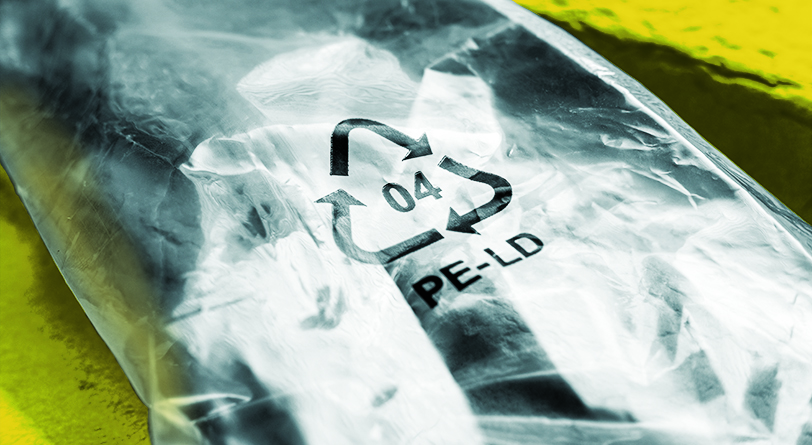Labeling Laws Examined
National Labeling Standards Remain Elusive, Experts Say

In October 2021, California enacted a law that continues to send tremors through the worlds of packaging and recycling. The measure amends the state’s Truth in Advertising Law by setting strict standards for claims that a product or package is recyclable, focusing on how and when companies should be allowed to apply the decades-old chasing arrows symbol or other marks denoting recyclability.
More than three years after the bill was passed, California regulators are still hashing out the details of how it will work. But as the law comes closer to taking effect, critics are warning of the problems it could pose for compliance.
Chief among them are fears that California’s example will inspire other states to adopt their own labeling measures, yielding a patchwork of regulations that challenge industry efforts to comply.
In a worst-case scenario, manufacturers would not be able to ship products from one state to another, even if there is a shortage, without the risk of breaking a labeling law, says John Richard, government affairs director for the Flexible Packaging Association (FPA). “Companies would risk a fine if it’s not labeled properly.”
To head off potential complications, packaging industry groups and a U.S. senator have been floating federal legislation that would create a single, national standard. “It’s not an issue that’s moving tomorrow,” says Richard. “But we’ve had some really good conversations.”
The California Law
For decades, consumers have relied on the chasing arrows label to determine whether an aluminum can, glass bottle, or plastic package could be tossed in a recycling bin rather than the regular trash.
But in recent years, concerns have mounted over the usefulness of the label, originally developed in the 1970s for recyclable cardboard products. Critics argue that many products labeled as “recyclable” never end up in the recycling stream, in part because the infrastructure remains underdeveloped, particularly where plastic is concerned. Or consumers may sort for recycling items that are not recycled in their area, potentially contaminating packaging that can be recycled.
Lawmakers in California responded with a law, Senate Bill 343, that would allow recycling labels only on packaging that is recycled in large enough quantities. How large? The law, dubbed the Truth in Recycling Law, sets several thresholds.
One of the more significant ones says packaging will be considered recyclable if it is made with a material collected by local curbside recycling programs covering 60% of the state’s population of more than 39 million people, according to the California Department of Resources Recycling and Recovery, known as CalRecycle.
Another threshold details that packaging needs to be sorted and sent for recycling to large-volume facilities that serve at least 60% of the state’s recycling programs.
Another threshold, which could apply to plastic films and packaging, covers products recycled through alternative collection methods such as store drop-offs.
Before regulators could enforce the requirements, however, they had to gather data on the state’s recycling programs. The research effort resulted in a draft report, published in December 2023 and opened for public comment in early 2024.
The information is supposed to inform manufacturers and others about whether their products can be labeled as recyclable—and determine whether packages are being mislabeled, according to CalRecycle. The agency plans to update the list in 2027 and then every five years thereafter, with possible supplements coming between those updates as new information becomes available.
Manufacturers and other interested parties must use that information as part of their assessment of whether products can be considered recyclable for labeling purposes. Under the new law, the improper use of recycling symbols is considered a deceptive or misleading claim, and manufacturers face new reporting requirements to ensure they can back up their claims.
“The problem is that what is recycled is specific to the local MRF and alternative collection infrastructure. One municipal recycling facility might not take what another MRF takes. And what is widely recycled in one state might not be widely recycled in another state, so having specific requirements is a challenge.”
John Richard, FPA government affairs director
Patchwork Fears
States have been busy when it comes to recycling-related legislation. Many, for example, have acted on extended producer responsibility legislation, which imposes requirements on manufacturers to help ensure their products and packages are recycled, composted, or reused after use.
California’s law is the only one on the books addressing labels for recyclability. However, about half a dozen states are looking at regulating recyclability claims, according to Andy Hackman, a lobbyist with law firm Serlin Haley LLP, based in Washington, D.C. Hackman also oversees government relations work for FPA at the state level.
Other legislative efforts address greenwashing—efforts to label products as sustainable or environmentally friendly when they are not.
Five states, meanwhile, have enacted laws governing claims about product compostability, says Dan Felton, executive director of AMERIPEN—American Institute for Packaging and the Environment, a materials-inclusive trade group for the packaging industry.
“That’s driving another wrinkle there,” he says.
The evolving legislative terrain prompted initial discussions around national standards starting around two years ago, Felton says. The goal is to avoid conflicting requirements in different states.
The California law, for example, might ban some packages from using the chasing arrow symbol in conjunction with the resin identification code. But about 30 states require it, Felton says. “There’s the rub.”
And while no other states have followed California’s labeling law, Felton says, it may just be a matter of time. “Another state or two is going to pass something in the next couple of years. Then that fear we have of a patchwork is reality,” he says.
What’s Circulating
Efforts to impose labeling standards for recyclability, compostability, and reusability at the federal level are coalescing around two bills, both in draft form.
One comes from the office of U.S. Sen. Jeff Merkley (D-Ore.) who has been active in other areas around labeling. Another—dubbed the Packaging and Claims Knowledge Act (PACK Act)—comes from AMERIPEN.
The PACK Act would establish a new national framework for making claims about compostability, recyclability, and reusability under the aegis of the federal Solid Waste Disposal Act. If enacted, it would preempt state laws and hand primary oversight authority to the U.S. Environmental Protection Agency (EPA), which is seen as having more expertise in product life cycle management.
Under current law, the Federal Trade Commission (FTC) has jurisdiction over environmental claims about packaging, which it exercises through its Green Guides. The guides, however, do not have the force of law, which has led to states developing their own, sometimes conflicting, standards.
While the Green Guides and FTC would continue to have a role under the PACK Act, the proposed legislation would rely on a nationwide certification program overseen by EPA. The agency would draft model criteria for accrediting independent entities such as the American National Standards Institute, which would then accredit third parties to evaluate and authorize packaging claims.
“We currently just feel like EPA is a better fit,” Felton says.
The proposal also takes advantage of the fact that there are already certification bodies for packaging such as the New York-based Biodegradable Products Institute for compostable packages, Felton notes.

What’s Next
The outlook for federal legislation depends on several factors, Felton, Hackman, and Richard say.
Among the most important is how the California law plays out. As of late summer 2024, efforts to fill in the details were proving complicated, they say. It has been difficult, for example, to distinguish clearly between recyclable packages and items that are actually recycled, even for relatively straightforward items like steel cans.
Other states are considering similar initiatives, Richard says.
“But the CalRecycle example is demonstrating to a lot of other agencies that implementation is vastly more complicated than many initially perceived,” he says.
Lawsuits may be another hurdle for the California labeling law. It raises issues, for example, related to interstate commerce, since companies make packages for national use, not just for specific states, Hackman says. There also are free speech implications, he adds.
“That’s the theory at least—that if there’s ever a legal challenge in California, those two things could be grounds for a potential lawsuit that could delay the implementation,” Hackman says. “But we’ll see.”
A third factor is the pace of activity in the U.S. Congress. It often takes several years for an idea to make it from legislative proposal to law, even when there is bipartisan support.
The proposals from Merkley and AMERIPEN only began circulating in spring 2024, Felton says. They have generated attention, but more serious conversations and any congressional hearings are not likely until 2025.
From there, it’s a question of whether legislation moves on its own, gets added to other legislation, or is rolled into a larger bill such as the proposed Break Free From Plastic Pollution Act, sponsored by Merkley and U.S. Rep. Jared Huffman (D-Calif.), Felton says.
Nonetheless, pressure to set new standards for recycling labels is likely to continue as lawmakers and others seek to make them less confusing to consumers—and to ensure the labels line up with the reality of current recycling systems and material recovery facilities (MRF).
“The problem is that what is recycled is specific to the local MRF and alternative collection infrastructure,” Richard says. “One municipal recycling facility might not take what another MRF takes. And what is widely recycled in one state might not be widely recycled in another state, so having specific requirements is a challenge.”
Joel Berg is a freelance writer and editor based in Pennsylvania.


